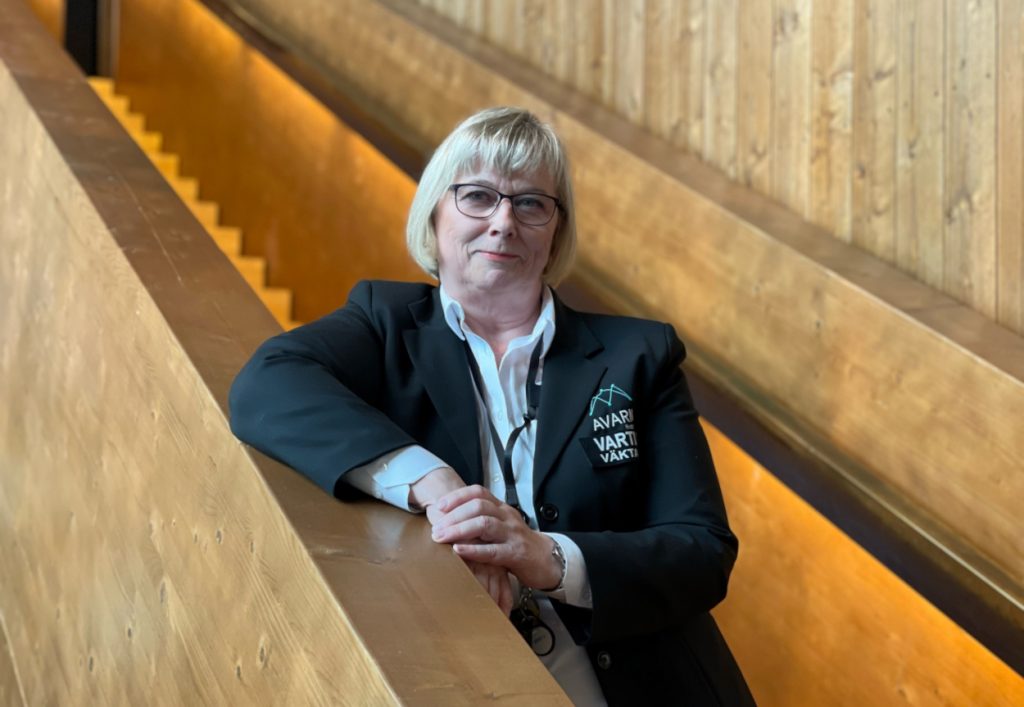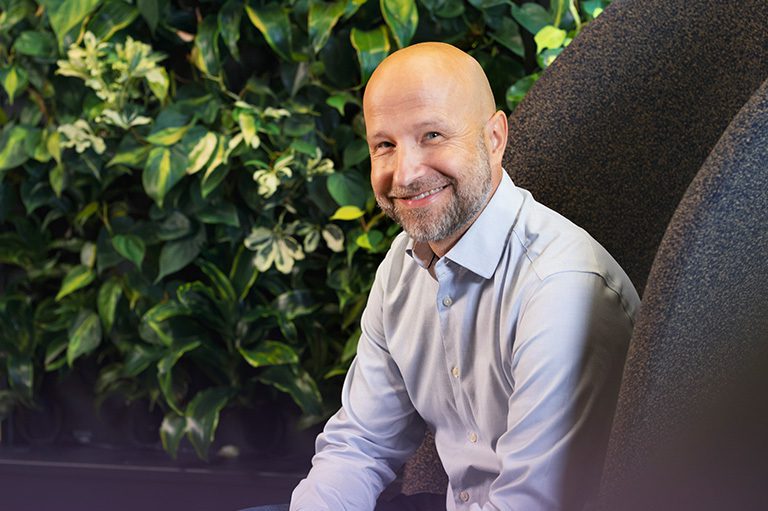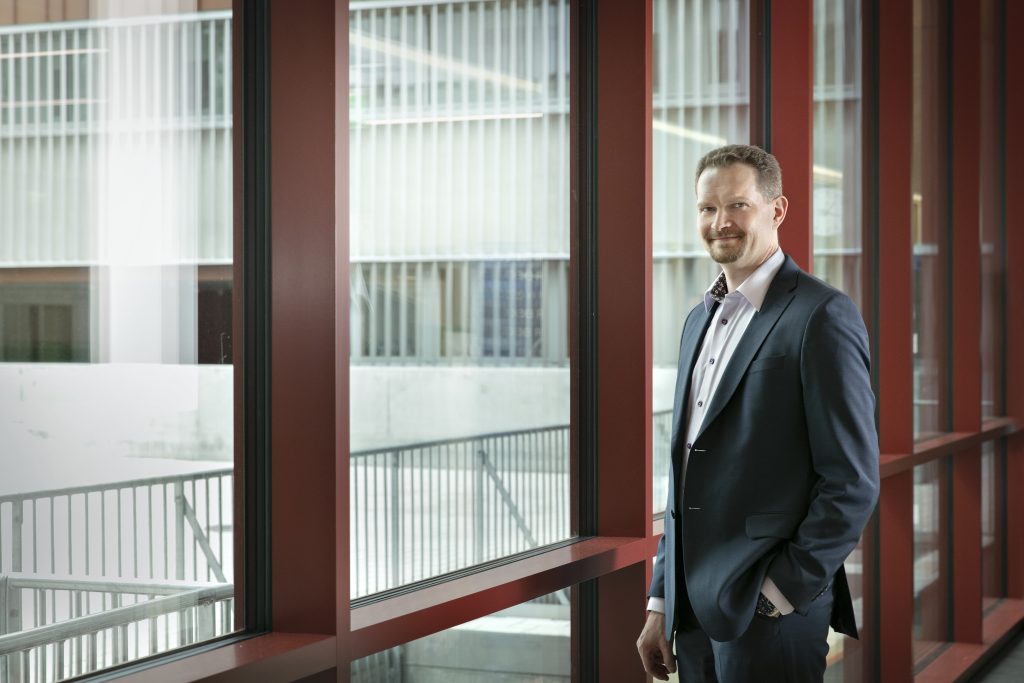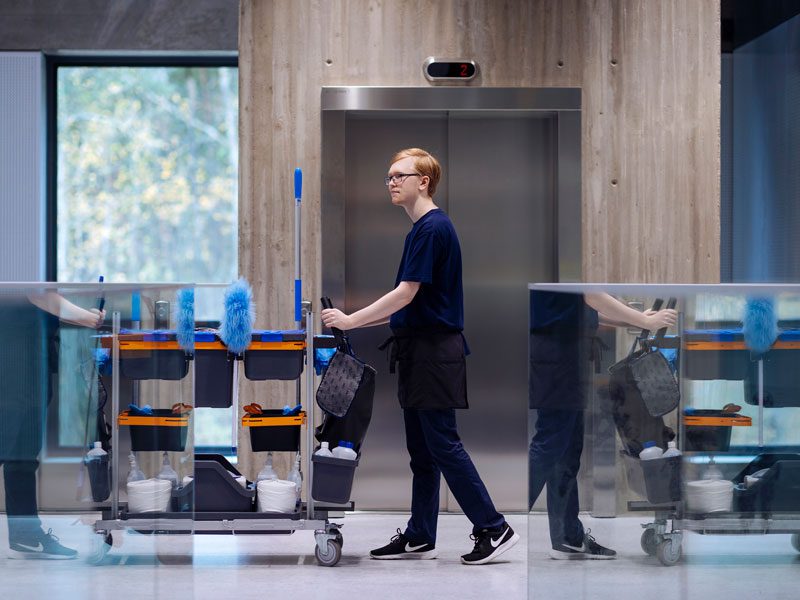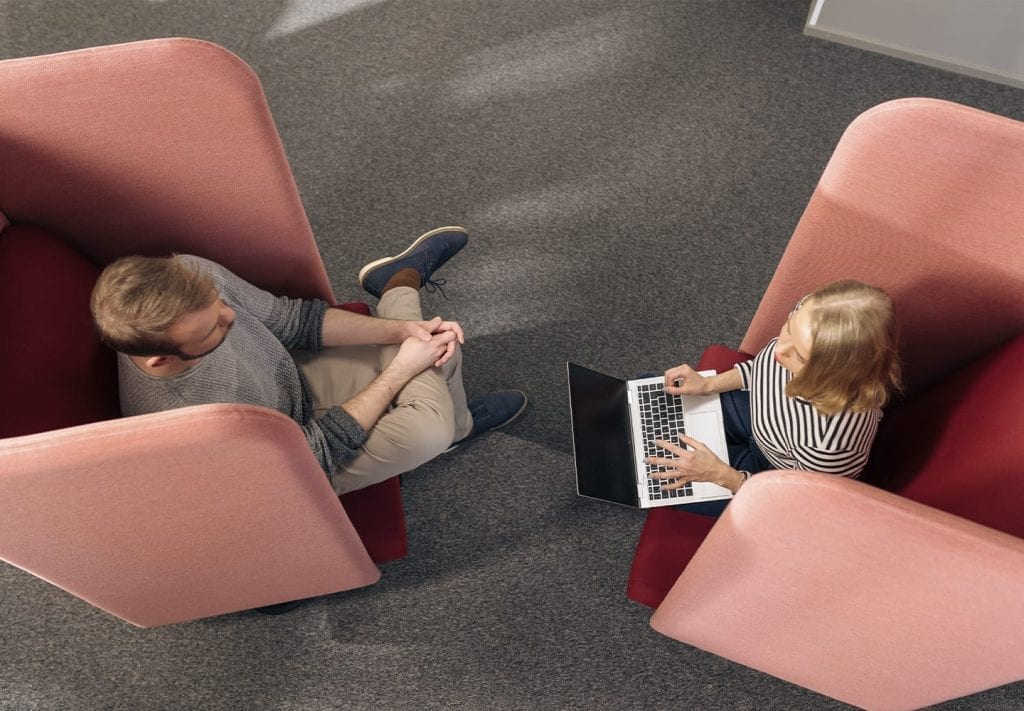The culturally and historically significant Merikasarmi barracks were designed by Carl Ludvig Engel. A wide range of events and developments have taken place inside their walls during their long and eventful history. The buildings have served as a hub for diplomacy and Finland’s foreign relations since the late 1980s, when the Ministry for Foreign Affairs moved into the premises.
Laivastokatu 22 is a prime location in the Katajanokka district of Helsinki. Merikasarmi is currently undergoing the most extensive modernisation project in its history, with Senate Properties renovating the buildings into a modern activity-based environment for the Finnish Government and the Ministry for Foreign Affairs, the main user of the facilities.
At the same time, all of the ministry’s units from different parts of Helsinki will be transferred to the same location – this is has been the ministry’s long-term goal for the past 50 years.
“The Ministry for Foreign Affairs is one of the largest ministries, and Merikasarmi will provide facilities for around 830 employees once the renovation project has been completed. Up until now, around 400 people have been working there. The design of the new activity-based environment pays special attention to comfort and safety, and to style and elegance in the guest facilities,” says Markku Inkeroinen, Construction Project Manager at Senate Properties.
Demolition work at Merikasarmi began in November 2018. The employees of the Ministry for Foreign Affairs will be able to move back to Merikasarmi in 2021.
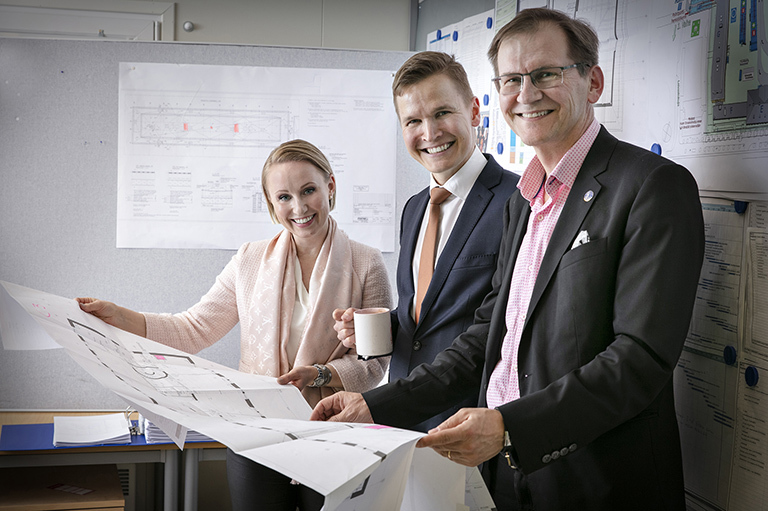
“The new facilities in Merikasarmi are intended for the Ministry for Foreign Affairs in particular, but will also house some operations of the Prime Minister’s Office, as well as joint facilities, such as meeting rooms, which can also be used by other ministries,” say Anna Pakkanen, Project Manager, Administrative Services, Ministry for Foreign Affairs; Heikki Hovi, Head of Unit, Prime Minister’s Office; and Markku Inkeroinen, Construction Project Manager, Senate Properties.
Breaking down walls for a modern activity-based environment
“The modernisation of Merikasarmi is currently Senate Properties’ largest priority project in terms of both size and value,” says Markku Inkeroinen, who is responsible for managing priority projects at Senate. The total area under renovation is around 26,000 square metres.
The barracks consist of eight buildings. Matruusikasarmi, the oldest and most impressive building, was completed in the early 1820s to alleviate the shortage of accommodation for Russian soldiers – up until that time, accommodation had been provided by the bourgeoisie of Helsinki.
Today, Matruusikasarmi serves as the main building of the Ministry for Foreign Affairs. An accommodation building for officers, designed by C. L. Engel, was completed next to Matruusikasarmi in 1836. Two years later, a hospital designed by A. F. Granstedt, Engel’s assistant, emerged at the southern edge of the yard.
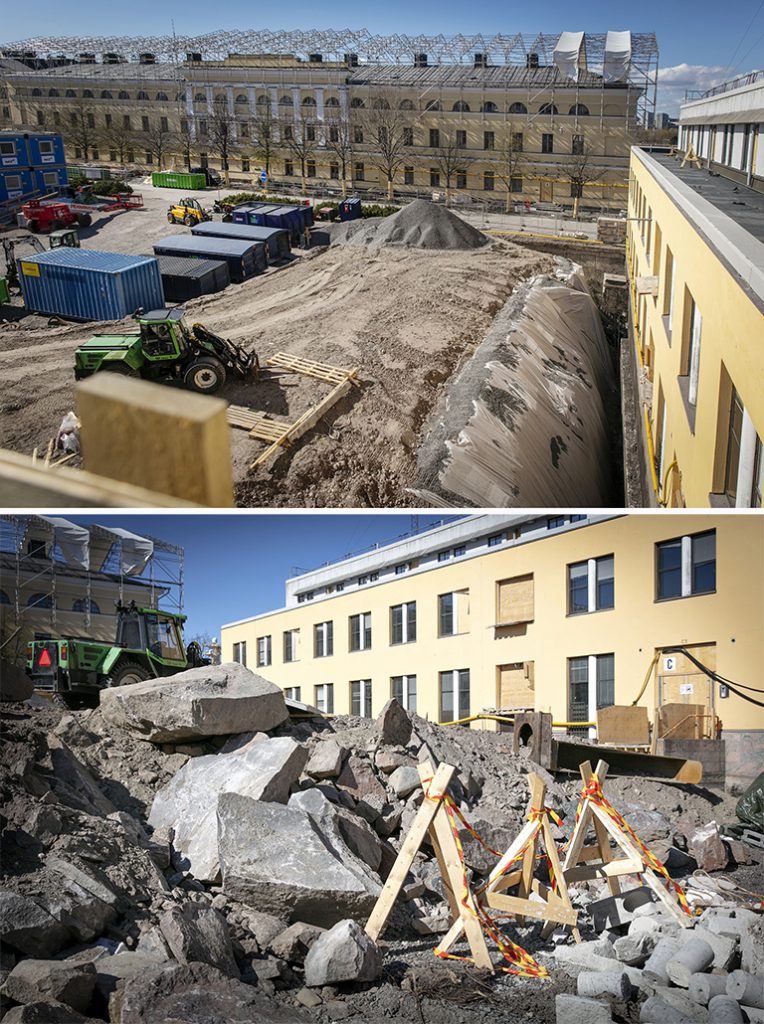
Matruusikasarmi, one of the most impressive historic buildings in Helsinki, serves as the main building of the Ministry for Foreign Affairs and has a significant effect on foreign guests’ impressions of Finland (top image).
Construction machines have taken over the yard of Merikasarmi. The Ministry for Foreign Affairs’ employees have been working in temporary facilities since February 2019. The construction site currently employs around 100 people, and their number will double in the autumn (bottom image).
Five new buildings emerged in the area in the 1980s, when the Ministry for Foreign Affairs needed new facilities for its growing number of employees. The large-scale renovation and extension projects were designed by architect Erik Kråkström. The old barracks buildings were renovated at the same time. The last renovation project to be completed was Matruusikasarmi in 1989.
“The ministry operated in as many as 22 locations around Helsinki. Merikasarmi still wasn’t large enough for all of its employees, but the ministry was able to significantly reduce its number of locations. The facilities in the barracks buildings were renovated in line with the then principles of office architecture, mostly into one-person offices. Now we are breaking down most of the walls to create a new activity-based environment,” Inkeroinen explains.
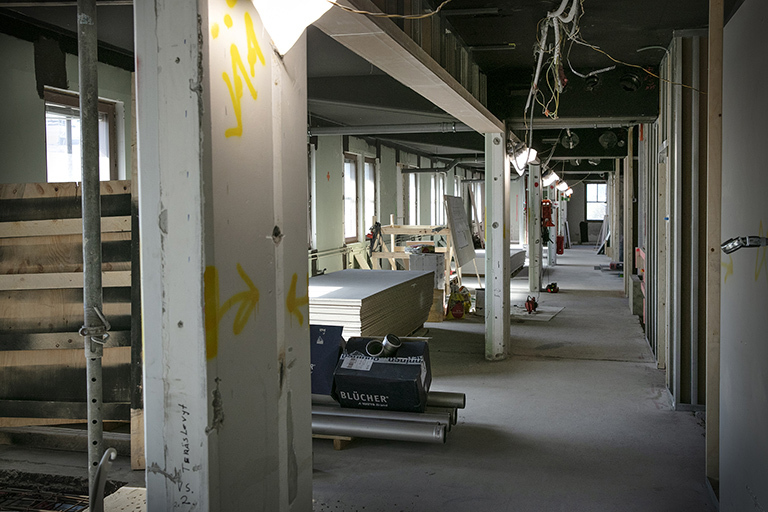
Markku Inkeroinen believes that the facilities will become light and spacious after the walls between the one-person offices, or “office boxes”, built in the 1980s have been taken down. “The ministry’s employees are in for a very pleasant surprise in 2021.”
Aiming for cooperation across ministries
The modernisation of Merikasarmi will be completed in two phases. The first phase began in late 2018, covering five buildings, and the second phase started in spring 2019, covering three buildings. Originally, the second phase was not intended to begin until the commissioning of the first phase, and the modernisation project was supposed to be completed in 2023.
Read more: TEM moved from four different locations into a new activity-based environment
According to Markku Inkeroinen, the project was accelerated when temporary facilities suitable for the Ministry for Foreign Affairs’ employees became available in other properties owned by Senate. In spring 2018, it still seemed that there would not be enough temporary facilities available and that some employees would need to stay in Merikasarmi until the start of the second phase.
The Government Administration Department was actively involved in the selection of the temporary facilities. Established in 2015, the department is responsible for the facility arrangements of all Finnish government ministries. According to Heikki Hovi, Head of Unit, the Prime Minister’s Office – one of the tenants in Merikasarmi – used joint government facilities as temporary solutions.
“The pieces have fallen into place in this project: the modernisation project is progressing efficiently on schedule, and the ministry employees’ move into temporary facilities outside the Katajanokka district has run smoothly.”
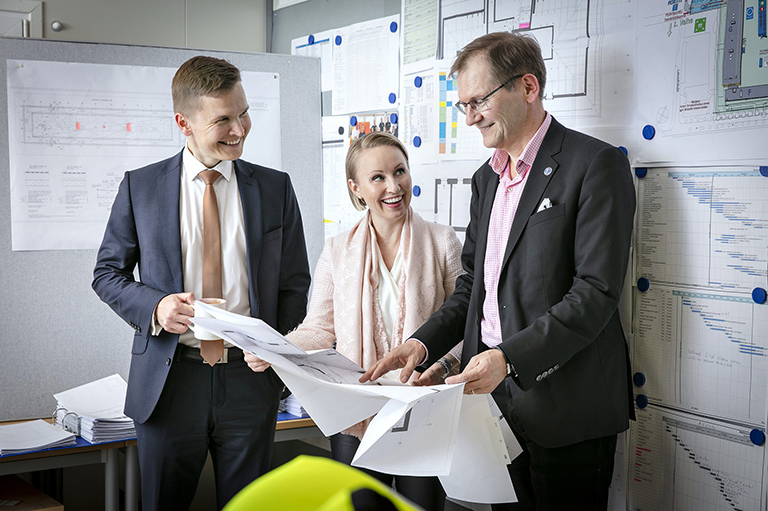 Heikki Hovi from the Prime Minister’s Office, Anna Pakkanen from the Ministry for Foreign Affairs and Markku Inkeroinen from Senate Properties attend construction site meetings on a regular basis at Merikasarmi.
Heikki Hovi from the Prime Minister’s Office, Anna Pakkanen from the Ministry for Foreign Affairs and Markku Inkeroinen from Senate Properties attend construction site meetings on a regular basis at Merikasarmi.
According to Heikki Hovi, the goal of the Prime Minister’s Office is for all ministries to work in more consistent premises in the future. This will enable smoother and more flexible collaboration within and between the ministries.
“Making the facilities more flexible and adjustable during each modernisation project is key. Genuine interaction and dialogue between people are important. The more employees meet one another face to face and the fewer emails and logistics arrangements are needed, the more meaningful their work will feel and the more smoothly information will flow.”
Merikasarmi represents Finland internationally
“The modernisation project has been a long process for our employees,” says Anna Pakkanen, Project Manager, Administrative Services, Ministry for Foreign Affairs, who is responsible for work environment development. The first reports were completed as early as the autumn of 2012, and the phase that led to the investment decision began with a capacity assessment in spring 2016, under the supervision of the Government Administration Department.
Giving up personal offices caused some resistance to change, as many employees of the Ministry for Foreign Affairs have been working in Merikasarmi for a long time. However, according to Pakkanen, most employees are enthusiastic about the change.
The employees have been involved in the project from the very beginning. Open communication is important, as is being attuned to employees’ feelings and wishes.
“In the early stages of the renovation project, we built a model space in Merikasarmi to show what our new facilities will look like. Our goal is for as many employees as possible to visit the model space. We talk about inclusive interior design: at a very early stage, employees can see what the activity-based environment will look like and also have a say about it.”
Read more: There will always be opposition to change – the most important thing is to listen
“In addition to flexibility, a healthy and accessible environment is important for the Ministry for Foreign Affairs. Style and elegance are also important, as Merikasarmi has a significant effect on foreign guests’ impressions of Finland,” says Anna Pakkanen.
“This modernisation is being implemented in line with the principles for similar renovations of our missions: Finnish design will be prominent, particularly in the new conference centre in the main building, which will be our shop window for Finland and Finnish world-class expertise.”
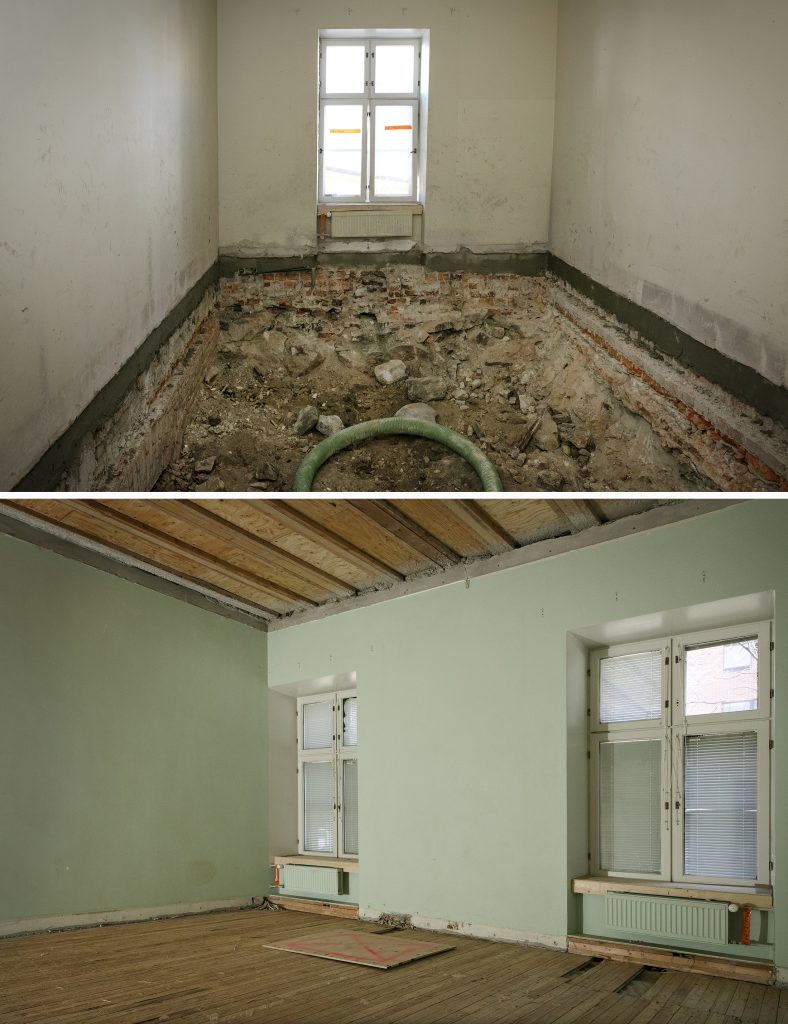
During the modernisation, careful attention is being paid to architectural features typical of various eras. Nineteenth-century barracks buildings are particularly significant in terms of construction history, and the renovation project is being carried out in close cooperation with the Finnish Heritage Agency (top image).
Harmful substances, such as creosote, were found under the wooden floors in the hospital. Such substances will be removed. At the time of construction, they were approved and used widely (bottom image).
New ways of working are being piloted during the renovation
According to Anna Pakkanen, digital knowledge work is progressing by such leaps and bounds that physical, virtual and social work environments must be in balance and support one another in the future.
During the modernisation project, the Ministry for Foreign Affairs’ employees are working in nine locations in the centre of Helsinki.
“We intend to make optimal use of the temporary facilities by piloting various ways and models of working. Being able to test these in practice is an invaluable opportunity.”
Pakkanen says that changes never progress directly from the starting point to the target.
“Organisations should be seen as processes. What makes this fascinating is that we keep upgrading our target: we are more and more ambitious about what work should be like in the future.”
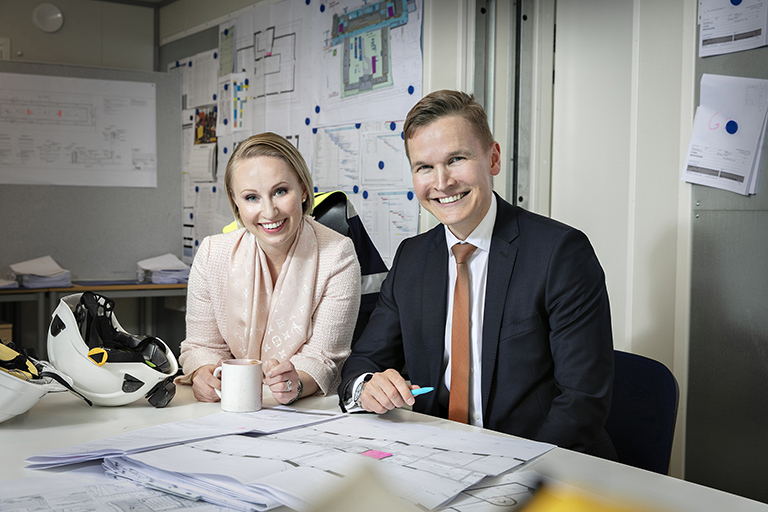
The modernisation project requires weekly attention from Anna Pakkanen and Heikki Hovi. “This is quite a jigsaw puzzle, as the project involves many operators. Our cooperation with Senate Properties and the building contractor, architects and other parties has run smoothly.”
According to Anna Pakkanen, the Ministry for Foreign Affairs has a considerably higher annual job rotation rate than the other ministries: there are years when 30% of the employees change jobs within the organisation.
“In other words, it’s not enough that we organise change workshops for our employees in Finland. We are also planning to organise coaching sessions for employees returning to Finland. Our vision is that, starting from 2021, we will be using modern ways of working and tools in the Merikasarmi facilities across departments, units and teams. ‘Together – in a new way,’ as Permanent State Secretary Matti Anttonen has so aptly put it.”
We are following the progress of the Merikasarmi modernisation project in our series of articles.





 Heikki Hovi from the Prime Minister’s Office, Anna Pakkanen from the Ministry for Foreign Affairs and Markku Inkeroinen from Senate Properties attend construction site meetings on a regular basis at Merikasarmi.
Heikki Hovi from the Prime Minister’s Office, Anna Pakkanen from the Ministry for Foreign Affairs and Markku Inkeroinen from Senate Properties attend construction site meetings on a regular basis at Merikasarmi.

